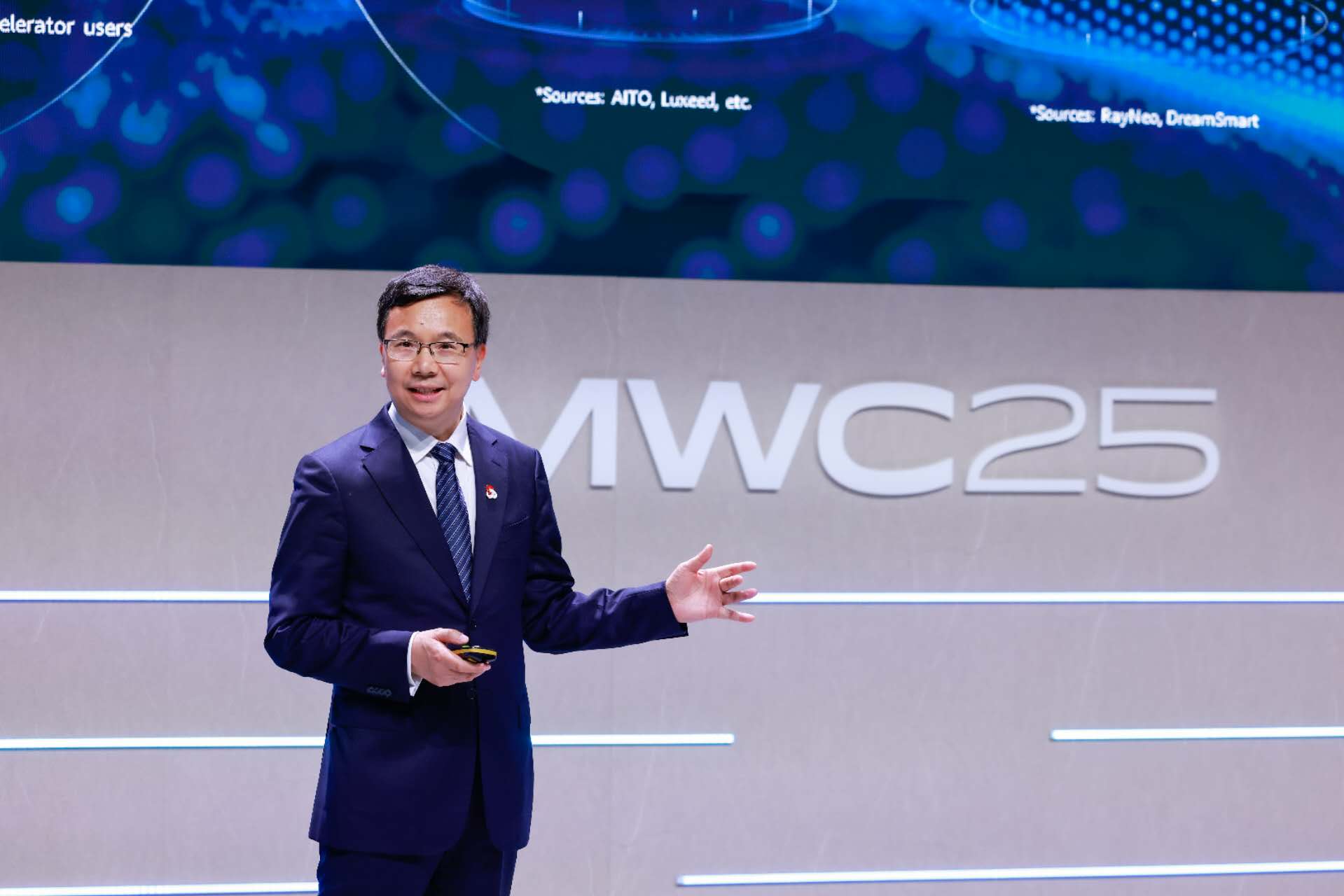In Barcelona, Huawei said, "The honeymoon period of AI and 5G is coming."
Once a year, the world's top event in the communications industry, MWC 2025 (Mobile World Congress), officially opened in Barcelona, Spain on March 3rd.
On March 3rd, 2025, at the Product and Solution Launch Event during MWC25 Barcelona, Yang Chaobin, a director of Huawei and CEO of ICT BG, launched the AI-Centric Network solution.
For ICT (Information and Communication Technology) manufacturers, the booming application ecosystem driven by AI, which brings a significant increase in traffic usage, presents new business growth opportunities. Of course, all of this is based on a solid network foundation that provides more reliable and faster transmission capabilities.
Yang Chaobin also mentioned that Huawei's AI-Centric Network builds a solid ICT network foundation by enhancing network capabilities to achieve full-domain connectivity and improving intelligence levels to establish a new paradigm for application-oriented operation and maintenance.
Yang Chaobin, a director of Huawei and CEO of ICT BG; Photo provided by Huawei
Specifically, full-domain network connectivity is achieved through the in-depth collaboration between AI and the network, which intelligently orchestrates network resources such as routing and bandwidth to provide guaranteed deterministic SLAs for intelligent applications. The communication large model accelerates the improvement of intelligence levels, enabling predictive proactive operation and maintenance, application-level perception optimization, and personalized and refined operation, thereby enhancing operation and maintenance efficiency and user experience.
Moreover, the AI-centric network reshapes business. At the individual level, it enables differentiated experience upgrades in different scenarios through precise matching of bandwidth, latency, and reliability.
"AI technology is developing at a speed beyond everyone's imagination, and AI applications and innovations are emerging in an explosive manner. Humanity is producing tokens on an unprecedented large scale. In the past eight months, the average daily TOKEN usage has increased by 33 times, and the paid TOKEN usage has increased by 15 times. It is predicted that the traffic driven by token consumption in 2030 will exceed 3.5 times the current total mobile Internet access traffic. Network architecture technology and capabilities urgently need to be innovated to meet the needs of the AI era," said Yang Chaobin, a director of Huawei and CEO of ICT BG.
At the Mobile World Congress, Huawei also set up a real driving environment for remote driving in its booth. Users could see the real-time operation of an L4-level autonomous vehicle in Huawei's Songshan Lake Park (the distance between Songshan Lake and Barcelona is 15,000 kilometers), and experience the commercial scenario of L4 autonomous driving on-site.
Smart Emergence learned on-site that this vehicle is equipped with more than 10 cameras and two lidars. Based on these sensors deployed on the vehicle, the on-board small model can perform real-time inference on the road conditions it perceives.
Through 5G network connectivity, the latency of wireless communication can be reduced from the original hundreds of milliseconds to a stable level below 20 milliseconds, and the image quality of backhaul can be upgraded from 480P to 1080P. With lower latency and higher speed, the operating speed of the autonomous vehicle can be increased from 5 - 10 km/h to 30 - 40 km/h, achieving higher operating efficiency.
In terms of the application maturity in the ICT field, the reason why Huawei demonstrated the real-time scenario of remote driving is to convey to the industry that vehicle-road cooperation (V2X) empowered by 5G-A will become a new opportunity for operators to achieve greater commercial success.
The real-time driving cockpit demonstrated at Huawei's booth. Image source: Enterprise authorization
From the application side, the popularity of applications such as AVP has ignited the market. Based on the real-time monitoring and remote control with deterministic low latency and high bandwidth of the 5G-A network, remote control of autonomous parking can be truly realized, driving the ground parking from a traffic lowland to a traffic highland.
In 2023, Huawei and Shanghai Mobile jointly built a Jinqiao 5G-A vehicle networking demonstration site, demonstrating the feasibility of realizing V2X services based on the 5G wide-area network. Currently, cities such as Beijing and Wuhan have decided to invest tens of billions of RMB to promote the "integration of vehicle, road, and cloud". More than 30 cities will emerge in the next three years, becoming a new opportunity for operators in the toV market.
Not only in the transportation field, during MWC2025, Huawei held an Industry Digital Transformation Summit. During the summit, Huawei, together with global industry customers, launched 83 global industry digital transformation demonstration sites for 71 major scenarios, including digital transformation solutions for ten major industries such as public utilities, government affairs, education, finance, power, transportation, oil and gas, chemicals, and retail.
From text interaction and voice interaction to multi-modal interaction, AI technology not only improves the real-time and convenience of interaction but also gives rise to many innovative applications. For example, the AI voice assistant carried on the cloud phone leverages the advantages of voice interaction to enhance the experience for the elderly, safeguard their physical and mental health, and help the elderly cross the "digital divide".
Facing the above needs, the network needs to continuously optimize its latency guarantee capabilities. By deploying 5G SA and 5G-A networks and introducing innovative technologies such as CUPS (Control and user plane separation) and dynamic GBR (Guaranteed bit rate), operators can not only effectively reduce the basic latency but also meet the differentiated and deterministic latency requirements of different application scenarios.
Li Peng, Senior Vice President of Huawei and President of ICT Sales and Services, said that in the past year, with the efforts of industry partners and global operators, 5G-A has entered a new stage of large-scale development. 5G-A and AI are complementary and will bring double-digit growth to operators' DOU and ARPU.

